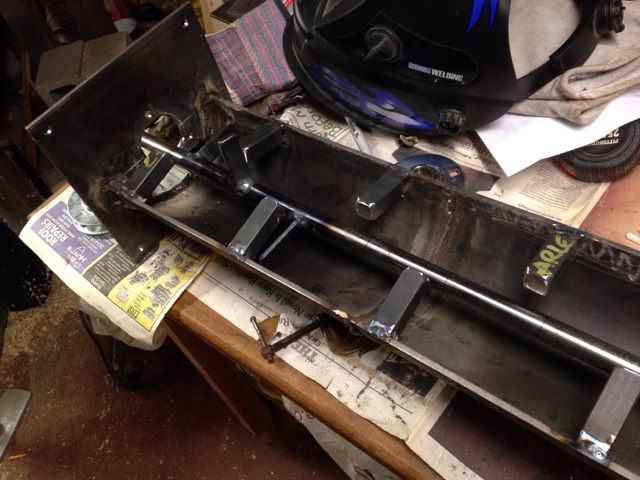The wheat from my test plot was harvested in late June (winter wheats) and mid-July for the spring wheats. The photos below show the grain after threshing and cleaning. To conserve the small amount of grain, the threshing was done by hand with a steel mesh screen on a counter top, and I cleaned it in front of a fan. I wish I had thought to take the photos with a constant scale, but I think you can still get a feel for the differences.
These wheat varieties were grown out from the very small samples (about 120 seeds) that the two seed banks released to me. The germination was fair to poor, so some of the varieties barely broke even the first year. But as I grow them out I hope to get 20:1 or better and build up the supply to marketable quantities in the next 3 years. The 2016 planting, already in the ground as of September 20, comprises a strip in the garden 4' wide and 120' long. I think it will require a full 1/4 acre to plant the yield from that test plot in the Fall of 2017. That 2017 test plot, which I think I will plant on Ron's Spring Street field, should yield several bushels for harvest in the summer of 2018. At that point, I will have enough to run some baking tests and decide what to plant for the 2019 harvest. That's the plan, anyway!
The Bacska from the Australian Winter Cereals Collection is rock hard and dark brown, but it was grown in pure compost so that may have contributed to the dark color. It appears to very high in protein. It was grown in compost due to USDA quarantine requirements.
 |
| Aussie Bacska |
The Bacska from the USDA Small Grains collection was grown in the garden and does not look as good as the Aussie stuff. Both of these grains have already been planted in my 2016-17 winter test plot.
 |
| USDA Bacska |
Haynes Bluestem is a bluestem wheat common to Wisconsin. Bluestems were big prior to the introduction of Red Fife and then Marquis. I am very excited to grow this one out. Unfortunately, the first year yield was not so great and it will take some time to grow it out. But it looks fantastic--rock hard and fairly plump.
 |
| Haynes Bluestem |
Wisconsin Pedigree No. 2 is a selection of Turkey Red suited for Wisconsin, The pedigree was developed by the University of Wisconsin in the 1910's. Both Pedigree No. 2 and the USDA Turkey Red developed striking red stems as they ripened in late June.
 |
| Wisconsin Pedigree No. 2 |
Prelude is another spring wheat that predates Red Fife. The yield was very low and I don't know how much effort I will put into growing it out.
 |
| Prelude |
Last shot is the Turkey Red from the USDA collection. It yielded the most, probably just due to the seed quality. I am not too interested in growing this out, since I think the future is in Pedigree No. 2 and Bacska. But I will conserve the seed and grow it out for another season or two.
 |
| Turkey Red from USDA small grains collection |





















